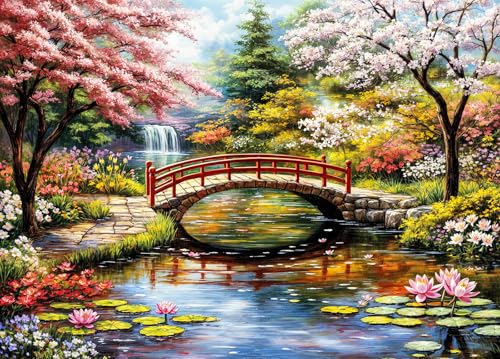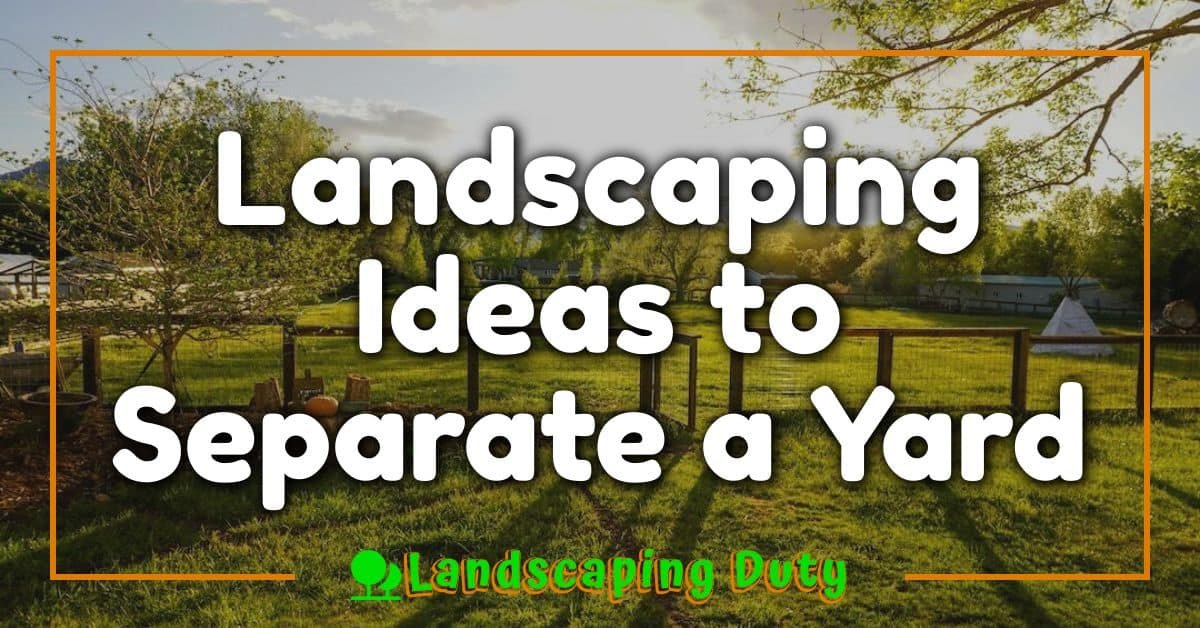I’ve always been fascinated by the serene beauty of Japanese gardens. There’s something so calming about their balance of nature, simplicity, and harmony. Whether it’s a small corner of your yard or a larger space, bringing a touch of Japan to your outdoor area can create a peaceful retreat right at home.

You don’t need a sprawling space or a professional landscaper to achieve this look. With the right elements—like carefully placed stones, lush greenery, and perhaps a trickling water feature—you can transform your yard into a tranquil escape. It’s all about embracing minimalism and letting nature shine.
Benefits Of Adding A Japanese Garden To Your Yard
Enhancing relaxation becomes easier with a Japanese garden. The minimalist design and natural elements like stones and water promote tranquility, creating a stress-free zone right in your yard.
Improving aesthetics adds visual appeal to your outdoor space. Designs incorporating features like bamboo, koi ponds, and lanterns evoke timeless elegance, blending seamlessly with nature.
Boosting property value provides both beauty and practicality. A well-maintained Japanese garden attracts potential buyers and stands out in real estate markets, offering a unique selling point.
Fostering mindfulness introduces a meditative ambiance. Features such as Zen sand gardens encourage mindfulness and create a space for quiet reflection or meditation.
Supporting biodiversity helps the environment by attracting birds, insects, and other wildlife. Plants like maples, pines, and mosses naturally integrate with local ecosystems, promoting ecological harmony.
Key Elements Of A Japanese Garden
Japanese gardens rely on specific elements to create a serene and balanced outdoor space. Here’s a closer look at the foundational features that define these gardens.
Rocks And Gravel
Rocks and gravel form the backbone of Japanese garden design. Rocks symbolize mountains or islands, often placed deliberately to create focal points. Gravel or sand represents water and is usually raked into wave-like patterns. For example, a dry rock garden (karesansui) uses these materials to convey a sense of calmness without actual water.
Water Features
Water features add movement and tranquility. Ponds, streams, or waterfalls are common, accented with natural stone and vegetation. In a smaller yard, a bamboo water spout (shishi-odoshi) can deliver the soothing sound of water. These features often create the feeling of being close to nature.
Plants And Trees
Plants and trees enhance the natural aesthetic of Japanese gardens. Evergreen shrubs, bamboo, and moss are typical choices. Trees like maple and cherry blossom provide seasonal color contrasts. Pruning is key to maintain a structured yet natural appearance, ensuring harmony within the space.
Lanterns And Ornaments
Lanterns and ornaments serve as subtle accents. Stone lanterns (tōrō) create soft lighting and are often placed near water or pathways. Other ornaments like basins (tsukubai) and stepping stones can guide movement and add functionality. These features emphasize simplicity and craftsmanship.
Types Of Japanese Garden Styles
Japanese gardens come in various styles, each reflecting a unique purpose and aesthetic. Choosing a specific style helps tailor your yard’s design to match your vision for serenity and natural beauty.
Zen Gardens
Zen gardens, also called “dry landscapes” or karesansui, use rocks, gravel, and sand to create symbolic scenery. These gardens emphasize simplicity and utilize carefully raked gravel to represent water, while larger stones mimic islands or mountains. Without water or lush plants, they offer a clean, minimalist design ideal for contemplation. I’d include a small stone basin or rake the gravel into flowing patterns for added detail.
Tea Gardens
Tea gardens, or roji, create a serene approach to a traditional tea house, focusing on calmness and preparation for the tea ceremony. The design often includes stepping stones, a stone lantern, and a water basin to encourage cleansing and mindfulness. I recommend adding evergreen plants such as moss or camellias to maintain a lush, inviting pathway that stays consistent year-round.
Strolling Gardens
Strolling gardens, or kaiyū-shiki, allow visitors to walk through winding paths that reveal different scenic views. These gardens usually include ponds, bridges, and islands, creating a sense of discovery. They balance water features with seasonal plants like cherry blossoms in spring or maple trees in fall. If space allows, I’d recommend adding a curved bridge or a koi pond to enhance the immersive experience.
Tips For Designing A Japanese Garden In Your Yard
Creating a Japanese garden in your yard requires careful planning and attention to detail. By focusing on key design elements, anyone can craft a serene space that reflects traditional aesthetics.
Planning The Layout
I start by assessing the yard’s size and natural features. Japanese gardens prioritize balance and asymmetry, so I use curved paths, staggered rocks, and layered plantings to create visual depth. I divide the space into smaller, purposeful sections, incorporating open areas and focal points for harmony. I align the layout with the garden’s style, whether it’s a tranquil Zen design or a more dynamic strolling garden.
Choosing The Right Plants
Plants in Japanese gardens enhance simplicity and seasonal beauty. I select evergreens like pine and juniper for year-round greenery and add cherry or maple trees for seasonal highlights. Low-maintenance plants such as moss and ferns cover the ground and soften hardscape edges. I prune branches and shape shrubs to maintain a refined, natural look.
« Seasonal Garden Inspiration: Fall Ideas for Colors, Plants, and Cozy Outdoor Spaces Expert Tips for Hiring a Landscaper for Small Projects to Transform Your Outdoor Space »
Incorporating Water Elements
Water features add motion and tranquility to Japanese gardens. I include a small koi pond, fountain, or stone basin to introduce the soothing sound of water. If space is limited, I opt for trickling bamboo fountains or simple gravel beds that mimic dry rivers. I frame water elements with rocks and plants to integrate them seamlessly into the garden’s design.
Common Mistakes To Avoid
Avoiding common mistakes ensures a Japanese garden retains its authenticity and tranquility. Missteps can disrupt the balance intended in the design.
- Overcrowding with Plants
Including too many plants or mixing incompatible species can overwhelm the garden’s simplicity. Stick to evergreens, moss, and a few seasonal trees.
- Disregarding Asymmetry
Symmetry can feel unnatural in a Japanese garden. Use unevenly spaced stones, irregular tree arrangements, and layered textures for a more organic look.
- Neglecting Maintenance
Allowing plants to grow unchecked or letting gravel scatter diminishes the garden’s aesthetic. Prune trees regularly and rake gravel to maintain design coherence.
- Selecting Inappropriate Decor
Using loud, ornate items conflicts with minimalism. Opt for simple, handcrafted ornaments like stone lanterns or bamboo features that blend with the natural elements.
- Exaggerating Water Features
Overly large or highly artificial water elements detract from the peaceful atmosphere. Choose quiet features like a small koi pond or a bamboo water spout.
- Ignoring Pathway Design
Straight paths break the flow of the garden. Implement winding paths with natural materials like stepping stones or gravel to enhance movement and discovery.
- Failing to Consider Scale
Large rocks or oversized features can overpower small spaces. Balance the scale of rocks, plants, and ornaments to ensure harmony within the yard’s size.
Conclusion
Creating a Japanese garden in your yard is a rewarding way to bring beauty, tranquility, and a touch of tradition to your outdoor space. With thoughtful planning and attention to detail, you can design a serene retreat that reflects harmony with nature.
Whether you’re drawn to the simplicity of a Zen garden, the charm of a tea garden, or the immersive experience of a strolling garden, there’s a style to suit your vision. By embracing minimalism and natural elements, you’ll not only enhance your yard but also create a peaceful space for relaxation and reflection.
Remember, it’s not about perfection—it’s about balance, intention, and connection with the environment. Take your time, enjoy the process, and let your garden grow into a space that brings joy and calm to your everyday life.
















